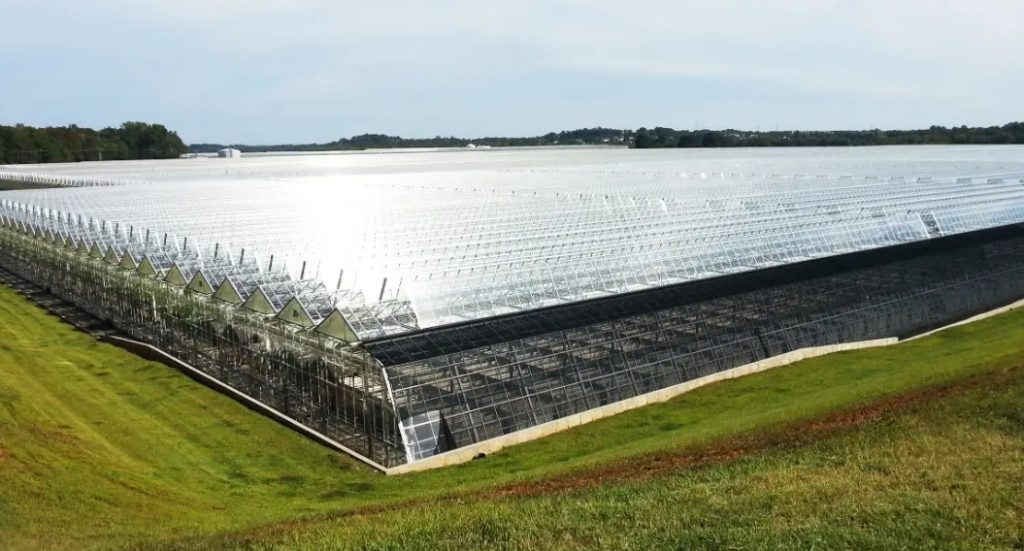1. Insulation function
One of the most important functions of a greenhouse is heat preservation, which can provide a frost-free period, extend the plant growing season, maintain appropriate temperature and humidity, and is not affected by climate change, which is conducive to the normal growth and development of plants. For example, in the cold winter, a greenhouse can provide sufficient temperature protection for plants to prevent them from being affected by severe weather such as hail and snowstorms.
2. Sunshade function
The greenhouse can also play a role in shading, resisting the harm of large amounts of sunlight, ensuring the normal photosynthesis operation of plants, and preventing leaves from withering, discoloration and other phenomena. Even during the high temperature period in summer, reducing excessive sunlight exposure is beneficial to the normal growth of plants and increased yields.

3. Temperature adjustment function
Greenhouses can also adjust the temperature in various ways to keep it within a suitable range. Some greenhouses use natural ventilation to realize automatic temperature adjustment based on the temperature difference inside and outside the greenhouse; while some greenhouses use artificial irrigation, watering, etc. to adjust the temperature and maintain appropriate humidity and temperature.
4. Windproof function
The structural setting of the greenhouse can also play a very good role in wind protection. It can not only prevent strong winds from rolling up cultivated plants or damaging the building structure, but also prevent dust, dust and other impurities brought by strong winds from entering the greenhouse, reducing the impact on plants. , to ensure that the greenhouse environment is clean and hygienic.
5. Increase output function
Greenhouses can not only provide better growing conditions and protection measures, but also help plants grow quickly, thereby increasing production. Various crops grown in greenhouses can achieve higher yields than in conventional production environments, such as some vegetables, fruits, flowers, etc.
All in all, greenhouse is a very important agricultural facility that has many functions and uses. It plays a certain role in the normal growth and development of plants, increasing yields, properly protecting plants, and maintaining environmental advantages such as temperature and humidity.
One of the most important functions of a greenhouse is heat preservation, which can provide a frost-free period, extend the plant growing season, maintain appropriate temperature and humidity, and is not affected by climate change, which is conducive to the normal growth and development of plants. For example, in the cold winter, a greenhouse can provide sufficient temperature protection for plants to prevent them from being affected by severe weather such as hail and snowstorms.
2. Sunshade function
The greenhouse can also play a role in shading, resisting the harm of large amounts of sunlight, ensuring the normal photosynthesis operation of plants, and preventing leaves from withering, discoloration and other phenomena. Even during the high temperature period in summer, reducing excessive sunlight exposure is beneficial to the normal growth of plants and increased yields.

3. Temperature adjustment function
Greenhouses can also adjust the temperature in various ways to keep it within a suitable range. Some greenhouses use natural ventilation to realize automatic temperature adjustment based on the temperature difference inside and outside the greenhouse; while some greenhouses use artificial irrigation, watering, etc. to adjust the temperature and maintain appropriate humidity and temperature.
4. Windproof function
The structural setting of the greenhouse can also play a very good role in wind protection. It can not only prevent strong winds from rolling up cultivated plants or damaging the building structure, but also prevent dust, dust and other impurities brought by strong winds from entering the greenhouse, reducing the impact on plants. , to ensure that the greenhouse environment is clean and hygienic.
5. Increase output function
Greenhouses can not only provide better growing conditions and protection measures, but also help plants grow quickly, thereby increasing production. Various crops grown in greenhouses can achieve higher yields than in conventional production environments, such as some vegetables, fruits, flowers, etc.
All in all, greenhouse is a very important agricultural facility that has many functions and uses. It plays a certain role in the normal growth and development of plants, increasing yields, properly protecting plants, and maintaining environmental advantages such as temperature and humidity.